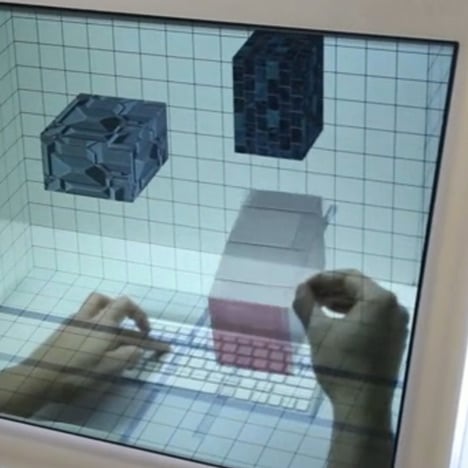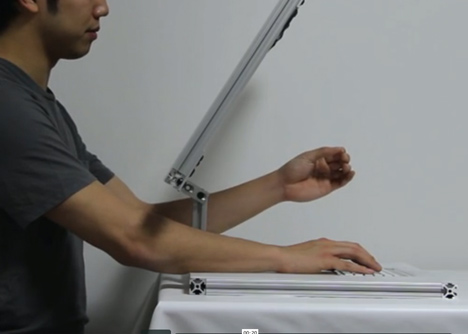
See-through computer allows users to "grab" digital content
News: a transparent computer that allows users to reach "inside" the screen and manipulate content with their hands was unveiled at the TED conference in Los Angeles last week.
Introducing the SpaceTop 3D desktop computer at the TED conference, interaction researcher Jinha Lee explained that enabling humans to physically interact with machines could make computing more intuitive.
"The gap between what the designer thinks and what the computer can do is huge. If you can put your hands inside the computer and handle digital content you can express ideas more completely," he told the BBC.
Working in collaboration with Microsoft and its Kinect technology, Lee developed a system that combines a transparent LCD display with built-in cameras that track gestures and eye movements.

Users place their hands behind the screen to scroll or type just as they would with a normal computer, but they can also raise their hands up to grab and manipulate the virtual 3D elements.
One camera is used to track fingers, recognising gestures like pinching and dragging, while the other camera faces the user and tracks the position of their head to display perspective-corrected 3D graphics.

A graduate of the Massachusetts Institute of Technology, Lee is currently carrying out his compulsory military service in South Korea at electronics firm Samsung, where he is developing television interfaces.
Last month Google released a movie preview of what it would be like to wear its voice-controlled Google Glass headset, while earlier this year we reported on an augmented reality iPad app that allows architects to look inside static architectural models – see all technology news.
Images and movie are by Jinha Lee.